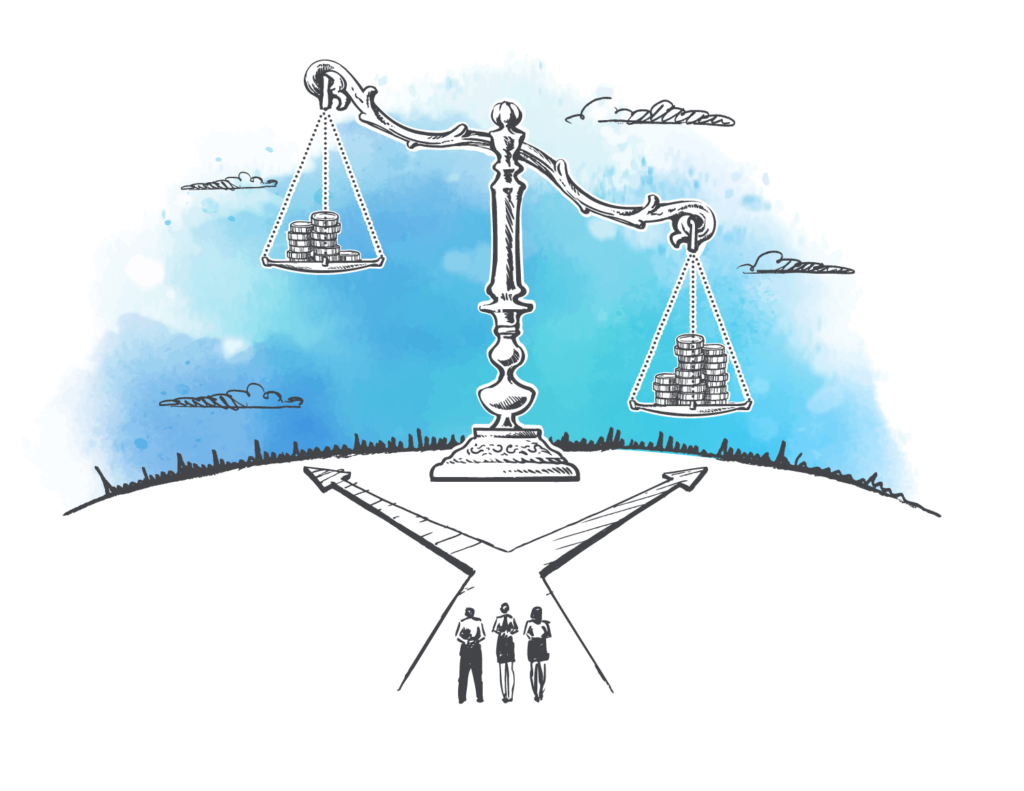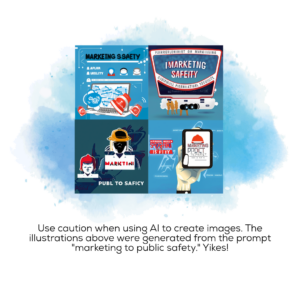If you’re a marketer, chances are you’re already very familiar with the customer lifetime value model. Calculating lifetime value simply means measuring how much profit you earn in total, year over year, from a client compared to the initial marketing investment to obtain that client.
This calculation is important because it allows you to make a fair comparison between two market sectors. For example, you may be marketing your product or service to both public safety and to a commercial sector. If so, you should expect that the public safety sector may have higher initial costs to gain a client but longer-lasting revenue streams.
Why? For starters, public safety is risk-averse. After all, leaders and organizations in the public sector can’t put the public in harm’s way to try untested solutions. The need for RFPs and slow procurement processes that can take two to three years can be a barrier to entry for your competitors, too. That said, these customers tend to be more loyal; in some cases, a public safety client can be counted on for 10 years or more.
Three Reasons Public Safety is a Good Investment
If you’re wondering whether to focus your marketing on commercial enterprises or public safety (or perhaps both), we wanted to share some solid reasons for tailoring your efforts specifically to law enforcement, 911, the fire service and/or EMS.
At RedFlash Group we regularly work with clients who are new to public safety. They may not know the sector yet, or maybe they report to people who don’t understand the promise of the market. Or perhaps they have a new CEO or board member who needs help assessing whether marketing to public safety is a good investment.
Here are three solid reasons it’s a good idea to invest in this sector:
- Market resilience. The essential and life-saving purpose of public safety makes it a truly resilient industry. Federal, state and local funding are always flowing into the market; that’s even more true during the unprecedented times ofCOVID-19. Which means that public safety agencies and organizations have the ability to invest in new products and services that support operations, even in the down markets that punish other industries.
- An investment-rich environment. As in many other industries, atechnology boom is happening in public safety. Big corporations are investing to create technologies and resources that benefit first responders, telecommunicators and the public. For example, starting in 2017 and over the next 25 years,AT&T will continue to invest more than $46 billion to build and develop the FirstNet network. Similarly, legacy emergency communication systems are “sunsetting” in many parts of the U.S., and states will have to plan for that and make investments in new technology and infrastructure.
- A chance to generate goodwill. Showing support for public safety generates plenty of goodwill for brands. Major players such as Microsoft Azure Cloud, Amazon Web Services, Ring, Uber and Apple are following suit to provide better service to customers and enhance public safety technologies.
Reminding your organization’s leadership of these factors will provide context for the promise of investing in marketing to public safety.
Three Reasons Public Safety ROI Can be Tough to Measure
Even with these benefits, demonstrating the value of selling to public safety can be a challenge. Your leadership likely views any investment from a corporate perspective, weighing all risks involved and needing to see tangible results. As a marketing executive, you have to reassure them that it will be a path worth taking if they’re willing to be patient.
Here’s why tracking ROI can be difficult compared to other sectors:
- Public safety has a long sales cycle. As mentioned above, budget approvals and procurements can be a lengthy process in this industry. Public safety officials are required to protect the use of taxpayer dollars and provide a fair and competitive playing field when procuring goods and services. While this means longer selling cycles, once gained, companies that serve public safety tend to retain their customers.
- You may not be tracking the right KPIs. Short of doing a robust ROI analysis, your best bet for gaining support for your public safety sector marketing is through shorter-term campaign analytics and lead generation. If your marketing team is in the midst of a sales campaign to, say, law enforcement or the fire service, take a beat now to agree on the key performance indicators (KPIs) that will translate into success, then track these closely.
Here are some KPIs to consider:
—Number of new contracts signed per period
—Dollar value of new contracts signed per period
—Number of engaged qualified leads in sales funnel
—Average time for conversion (from lead to customer)
—Net sales (dollar or percentage growth)
- There could be a lack of alignment between sales and marketing. Conflicts often arise when these two teams aren’t in agreement on your goals for ROI. Let’s say, for example, that your marketing team is withholding marketing dollars to reach public safety in favor of other sectors. Perhaps they’re asking the sales team to justify their cost of attending public safety conferences based on foot traffic and badge scans. That won’t work. With public safety’s longer sales cycle and often protracted procurement processes, the emphasis needs to be more toward branding and establishing your presence in this space, building trust, awareness and relationships. Start a conversation around better measurement (see above) to get your leadership, marketing and sales teams in sync.
The bottom line is this: Your public safety sales funnel is likely to be filled with slow-moving prospects. It takes dedicated time to build trust in the public safety world, both with your company and your products. Keep your sales and marketing team’s attention on communicating the real benefits of your solutions to public safety, while forecasting the potential ROI of having them as a loyal, long-term customer. This will demonstrate the public safety market’s value to leadership and ensure that the risks you take will be worth it for years to come.
Related Posts
-
Selling to public safety is not the same as selling in other industries. Discover 3…
-
At the RedFlash Group, we think a lot about purpose. Maybe it’s because our clients…
-
As someone in a leadership role, you’ve got a lot on your plate right now.…










 The RedFlash Group is a GSA Contract Holder under Schedule 541, Advertising and Integrated Marketing Solutions
The RedFlash Group is a GSA Contract Holder under Schedule 541, Advertising and Integrated Marketing Solutions